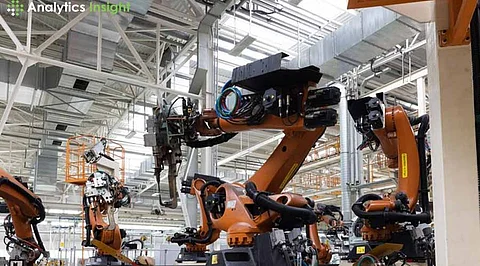

Automation is a process of using control systems and information technologies to reduce the need for human work in manufacturing. Robotics, therefore, forms part of the automation systems used in manufacturing industries for raising levels of productivity, quality, and competitiveness. This article provides an in-depth explanation of automation systems in manufacturing.
1. Repetitive Tasks: Robots perform repetitive tasks, which may be monotonous and prone to errors by human workers, with extreme proficiency. In such a way, the human worker would have more time for complex and strategic work.
2. Hazardous Environments: Robots may also be used in hazardous settings, like with toxic chemicals or very high/low temperatures, thus saving human workers from possible injury.
3. Precision and Accuracy: Robots perform tasks with high precision and accuracy, which leads to quality products consistently.
4. Increased productivity: Automation systems driven by robotics can substantially contribute to an increase in production rates, reduction of lead times, and enhancement of overall efficiency.
5. Flexibility: Modern are much more flexible and reprogrammable for various tasks. They have their basis on flexibility and quick response to changing production demand.
There are a few common types of robots used in manufacturing, each within its application area:
1. Industrial Robots: These are by far the most common type of robot in manufacturing, catering to repeatable processes such as welding and assembly, among others that pertain to material handling.
2. Collaborative Robots: Cobots are designed to safely work alongside human workers, sharing tasks and collaborating on complex processes.
3. Autonomous Mobile Robots: Being mobile robots, AMRs find their applications in several places within a manufacturing facility to navigate and actuate all by themselves in moving materials from one point to another without human interference.
4. Specialized Robots: According to the industry and need, there might be specialized robots that are used in painting, packaging, or even in inspection.
The integration of robotics into the manufacturing process comes with various forms of benefits. It includes but is not limited to:
1. Improving Quality: With robots, product quality can become consistent as human errors would be eliminated and thereby retain precision in processes related to manufacturing.
2. Increased Efficiency: Automatic systems involving robotics can iron out procedures, reduce waste, and thereby enhance productivity.
3. Cost Savings: While the initial investment in robotics is very high, the eventual benefits accruing from reduced labor costs and higher efficiency translate into considerable cost savings.
4. Improved Safety: Robots may perform tasks related to hazardous production environments, and as a consequence, they offer protection for human workers.
5. Competitive Advantage: In adopting automation and robotics, a manufacturer obtains a competitive advantage based on higher quality products, faster delivery times, and at lower costs.
Even though there is a long list of advantages, there are also some challenges that must be faced during the integration process of robotics within manufacturing. The initial investment in robotics is very high because they require a huge amount of capital to be initially invested in it. Moreover, robotics may displace some jobs and raise several related issues on employment and economic impacts. Lastly, robotics systems have to be regularly serviced and maintained to keep them in good condition and run smoothly. Integration and programming, the integration of robots within current manufacturing processes is not an easy job, and it requires very specialized skills and expertise.
The future of robotics in manufacturing seems brilliant for continuous improvement in technology and better rates of adoption. As robots continue to get smarter, clearer, and more affordable, they are expected to shape the face of manufacturing more intelligently.
In other words, robotics can act as a strong force for efficiency, quality improvement, and better competitiveness within the manufacturing industry. An accurate perception of the role of robotics, after weighing challenges and benefits with due care, brings appropriate decisions on implementation systems for automation to specific needs and goals.
What is the main role of robotics in manufacturing?
Robotics plays a very important role in the automation of tasks, which may be repetitive, hence enhancing efficiency and quality. They are applied in several fields like welding, assembly, material handling, and inspection.
What are some of the benefits associated with robotics in manufacturing?
Some of the benefits associated with robotics are increased productivity, quality, reduced costs, safety, and flexibility.
What are the challenges of using robotics in manufacturing?
These will be the issues to be faced: the cost of investment, job displacement concerns, upgrading and maintenance, and integration problems.
What are the types of manufacturing robots?
Types similar to those include industrial robots, collaborative robots, autonomous mobile robots, and specialized robots.
What is the difference between an industrial robot and a collaborative robot?
Industrial robots are programmed to execute repetitive work in series and often do so within an enclosed cage environment. Collaboration robots, conversely, operate safely among human employees and can be utilized in multiple applications.
Which sectors normally use robots?
The use of robotics can be evident in the following: automotive, electronics, aerospace, food, and beverage.
What is Robotics together with examples?
Examples include welding, assembly, painting, material handling, inspection, and packaging.
What are the future trends in robotics for manufacturing?
Future development will be towards making robots more advanced and intelligent, greater use of Artificial Intelligence and Machine Learning, and incorporation with other technologies such as IoT.
How does one company evaluate the return on investment for robotics?
ROI can be measured by companies through benefits such as productivity gained, cost reduction, quality, and safety.
What are some of the ethics concerning robotics usage in manufacturing?
Ethical issues to take into consideration are job loss, privacy issues, and misuse of robotics technology.
